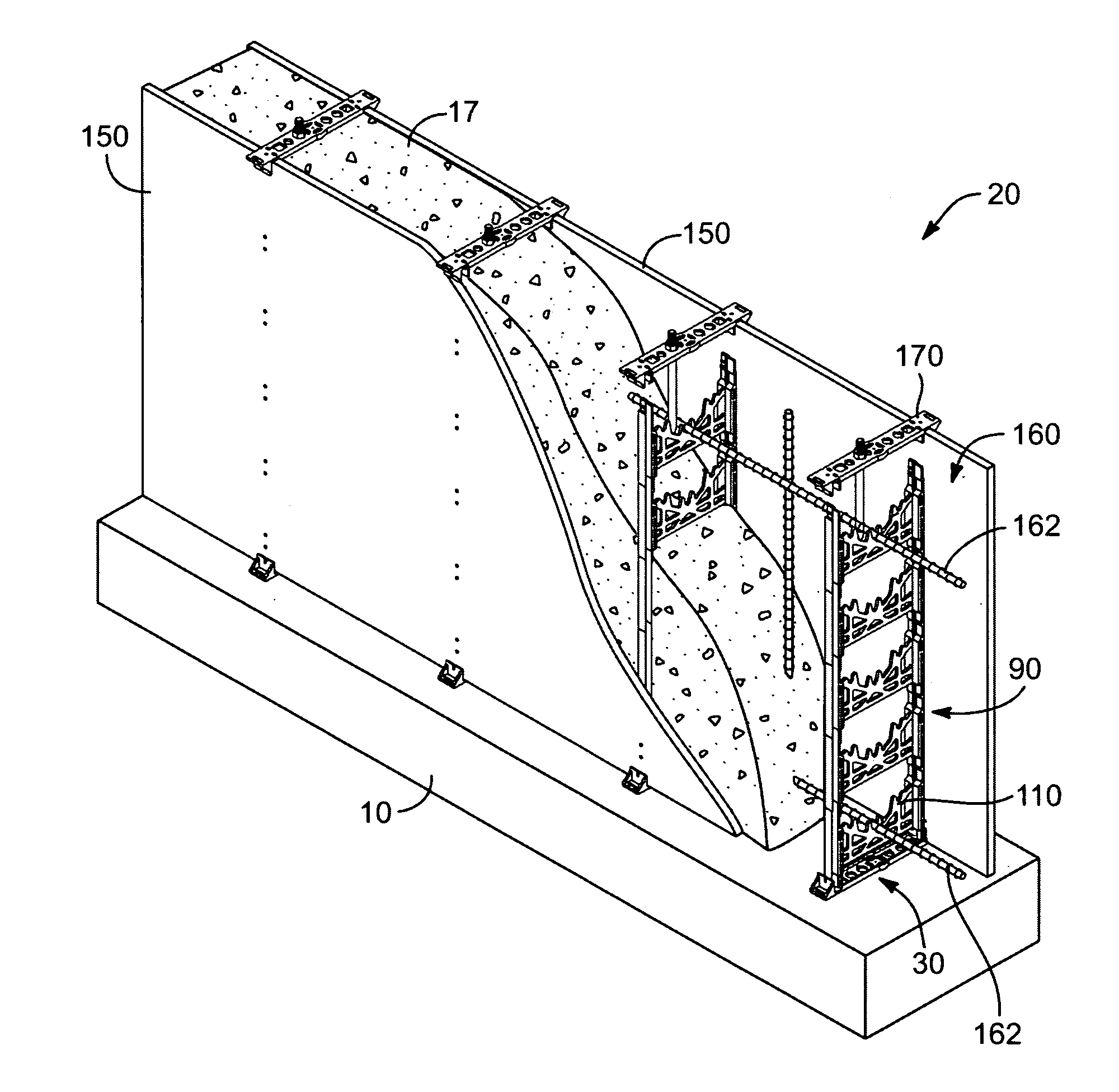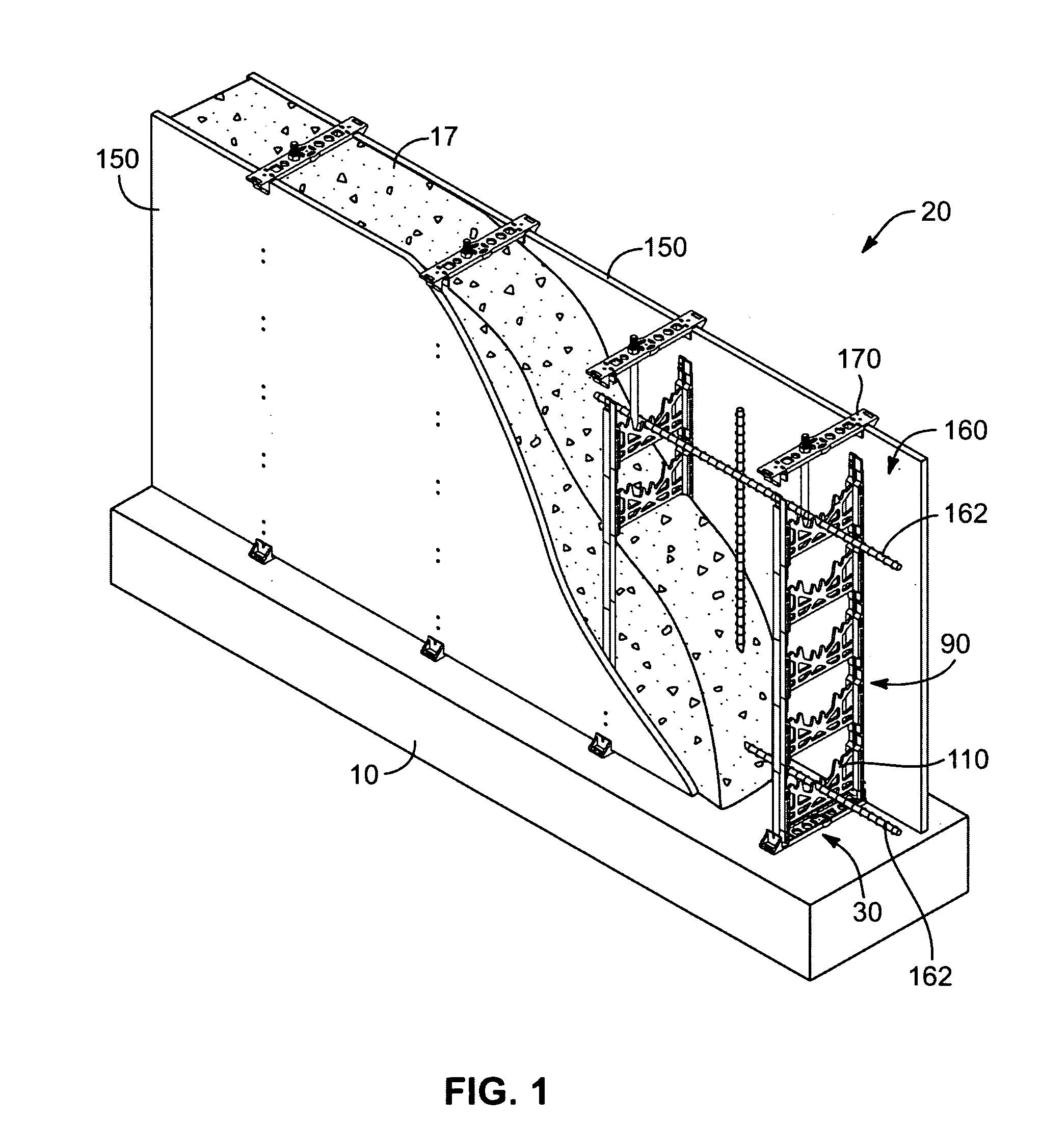Wall forming system and method thereof
a wall and forming technology, applied in the field of tie systems, can solve the problems of high labor intensity, high cost of shipping such forms, and high risk of damage, and achieve the effect of reducing labor intensity, reducing labor intensity, and reducing labor intensity
- Summary
- Abstract
- Description
- Claims
- Application Information
AI Technical Summary
Benefits of technology
Problems solved by technology
Method used
Image
Examples
Embodiment Construction
[0031]Referring first to FIG. 1, there is disclosed a partial view of a tie system 20, according to the present invention. The primary components of the tie system 20 comprise a base tie 30 and a wall tie 90. As will be set forth herein, the base tie 30 and wall tie 90 are utilized as support structure in conjunction with panel structures 150, such as typical plywood or Form ply, to build concrete forms for forming concrete walls for various residential and commercial buildings.
[0032]Such a tie system 20 includes multiple base ties 30 and multiple wall ties 90. The base ties 30 are placed and secured, in a spaced apart arrangement, to a concrete footing 10. Each base tie 30 receives a stack of wall ties 90 configured to extend in a vertical arrangement to form a tie stack 160. Each of the wall ties 90, within a stack, are configured to be directly interconnected together and configured to extend vertically, one above another. After running a first course of wall ties 90, horizontal ...
PUM
 Login to View More
Login to View More Abstract
Description
Claims
Application Information
 Login to View More
Login to View More - Generate Ideas
- Intellectual Property
- Life Sciences
- Materials
- Tech Scout
- Unparalleled Data Quality
- Higher Quality Content
- 60% Fewer Hallucinations
Browse by: Latest US Patents, China's latest patents, Technical Efficacy Thesaurus, Application Domain, Technology Topic, Popular Technical Reports.
© 2025 PatSnap. All rights reserved.Legal|Privacy policy|Modern Slavery Act Transparency Statement|Sitemap|About US| Contact US: help@patsnap.com



